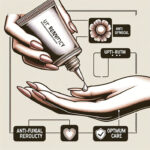Black Toenail Treatment: What You Need to Know

Getting to Know the Black Toenail Phenomenon
Ever noticed your toenail turning dark and wondered what’s up with that? You’re not alone! A black toenail is something many of us face at one time or another, often without knowing much about it. In everyday talk, a black toenail means a nail that’s suddenly darkened—sometimes without warning, or following an injury. While that eerie color might set off alarm bells, there’s usually more to the story. Today, let’s break down what causes this discoloration and what it might mean for your foot health, all in a friendly, laid-back chat that’s both informative and easy to understand.
So, What Exactly Is a Black Toenail?
It turns out that a black toenail isn’t just a beauty problem—it can be a signal that something else might be going on beneath the surface. Most of the time, when you see a scan of darkness spreading across your nail, it’s because of a little bleeding under the nail bed. A stubbed toe or a clumsy moment with a heavy object can easily cause what’s known as a subungual hematoma. But don’t jump to conclusions—sometimes the darkening isn’t about an accident at all and might hint at other health conditions. That’s why getting a good look at the whole picture matters.
Common Causes and Clearing Up Misconceptions
There’s plenty of hearsay out there when it comes to black toenails. Many people automatically think that it’s always a sign of something serious requiring drastic treatment. In reality, most cases come from simple everyday injuries or even wearing shoes that are just too tight. Still, it’s best not to write it off as just a cosmetic issue without a proper check, especially since conditions like fungal infections—or in rare cases, even melanoma—can be behind it. Cutting through the myths can help you focus on getting the prevention and care you really need.
Why Spotting a Black Toenail Early Is Crucial
Think of your toenails as tiny health barometers. A sudden change in color, texture, or even shape shouldn’t just be ignored. Catching a black toenail early can be the key to avoiding further complications like infections or additional nail damage. Acting quickly means there’s a better chance to treat both the look and the health of your foot, so being aware of what to watch for really pays off in the long run.
Diving Into the Causes and Risk Factors
When Trauma Leads to a Black Toenail
More often than not, a simple bump or knock to your toe is behind that darkened nail. A hard hit against a surface might cause bleeding underneath, resulting in the classic black mark. Even a minor mishap, if it’s just right (or wrong!), can bruise the nail bed enough to leave its mark. While many of these injuries heal on their own, keep in mind that repeated trauma or a particularly severe impact could lead to longer-lasting issues. So, watching your step—literally—and picking the right shoes can go a long way in keeping these accidental injuries at bay.
Underlying Health Conditions at Play
Of course, not all black toenails start with a bump or a drop. Sometimes, health conditions like diabetes, circulation problems, or lingering fungal infections are the culprits behind those mysterious dark hues. Even certain medications or a lack of key nutrients can change the way your nails look. In such cases, the dark toenail is more like a symptom of a larger issue that needs attention, so understanding the full context of your health is super important when deciding on treatment.
Spotting the Signs and Symptoms
Color Changes and Structural Tweaks
The first hint something is off might just be a small patch of dark on your nail that slowly spreads. Along with this change in hue, you might notice odd bumps or an irregular surface. These shifts not only catch your eye but also signal that it might be time to take a closer look. Since your nail’s structure plays a big role in its overall health, keeping an eye out for any of these changes can help you figure out if it’s a simple bruise or something that needs a bit more investigation.
Pain, Discomfort, and Other Red Flags
If you’re feeling any pain or discomfort, especially after an injury, that’s a cue not to ignore things. A throbbing ache or a steady, dull pain—sometimes even accompanied by some swelling or pressure—is your body’s way of saying, “Hey, something isn’t right here!” In these instances, it’s a good idea to reach out to a professional who can check for complications and steer your recovery in the right direction.
When It’s More Than Just a Cosmetic Issue
It can be a fine line between a harmless dark spot and a sign of deeper trouble. If your black toenail is a one-off occurrence from a minor injury, you might breathe a sigh of relief. But if you’re dealing with thinning nail material, ongoing texture changes, or continuous discomfort, it might be time to dig deeper. People with chronic conditions like diabetes should pay even closer attention since even subtle changes in their nail health can hint at bigger issues.
Sorting Out Benign vs. Serious Cases
Not every darkened nail spells trouble. Cases that stem from small, isolated injuries usually involve just a bit of discoloration and minimal discomfort. However, if the dark patch grows, persists over time, or comes with a misshapen nail, then it might warrant a closer look. Occasionally, what looks harmless on the surface could be masking a fungal infection or—in very rare cases—a sign of melanoma. Getting a pro’s opinion helps ensure that nothing slips through the cracks.
How Do We Diagnose a Black Toenail?
Starting with Your Medical History and a Visual Check
Your journey to a proper diagnosis often begins with your full story. Your doctor might start by asking about recent injuries, any ongoing health issues, or medications you’re taking that could be affecting your nail. A good visual inspection follows, where the expert looks for signs of trauma, discoloration, or any changes in the nail structure. This combo of questions and a close-up look usually provides plenty of clues about what’s really going on.
Digging Deeper with Lab Tests and Imaging
If your nail still has secrets to spill, your healthcare provider might suggest a few lab tests. These could include blood tests to check for infections or markers of inflammation. Sometimes, an X-ray is in order too, especially if there’s any suspicion that a bone-related issue could be tied to the trauma. These tools paint a clearer picture of the damage under the nail, helping to tailor a treatment plan that targets the root of the problem.
When Specialist Advice Steps In
If your black toenail case looks a bit complex or if there’s reason to suspect something more serious, a referral to a specialist—like a dermatologist or podiatrist—might be the next step. These experts have a keen eye for nail pathology. They can spot subtle signs that might not jump out during a general exam and offer additional tests or treatments specifically tailored to your situation. Their detailed approach means you get a thorough check-up, making sure every little detail is addressed.
Treatment Paths for a Black Toenail
Traditional Medical Treatments and Procedures
Once your cause has been pinned down, several treatment options can come into play. If your black toenail is the aftermath of a bruise or injury, simple measures like rest, applying ice, and elevating your foot usually do the trick. Over-the-counter pain relievers can help ease discomfort. If things are a bit more intense, draining the blood from under the nail might be necessary, and if there’s an infection, a course of antibiotics could be on the cards. Sometimes, a bit of nail trimming or removal might be suggested to help the nail heal properly. The key focus is always on relieving pain and warding off any further complications.
Home Remedies and Self-Care Tips
If your case is mild, you might start with some good old home care. Soaking your foot in warm water, using an antiseptic solution, and keeping your nails clean are simple yet effective ways to support healing. It’s also crucial to keep the area dry to prevent any secondary infections. A dab of a gentle moisturizing cream and some over-the-counter pain relief can go a long way. Just remember, while self-care might work for small issues, don’t hesitate to consult a professional if your symptoms stick around or worsen.
Keeping Black Toenails from Making a Comeback
Optimal Nail Hygiene for Prevention
Good nail hygiene is your first line of defense against black toenail recurrences. Regular cleaning and trimming can help save you from accidental injuries and lower the risk of fungal infections. Make sure your nail tools like clippers and files are clean to keep pesky contaminants at bay. And don’t forget—after showering or swimming, drying your feet thoroughly is essential to ward off unwanted fungal growth. These small, routine practices work wonders for both keeping your nails looking great and protecting your overall nail health.
Easy Lifestyle Tweaks and Footwear Choices
Sometimes, the tiniest changes in your lifestyle can make a big difference. Choosing well-fitting, supportive footwear is crucial in preventing those unexpected toe injuries. Whether you’re active in sports or just on your daily walk, give your feet the extra care they deserve. A bit of mindful exercise to boost circulation, combined with the right shoes, can help prevent many of the traumas that lead to a black toenail. It’s all about balancing activity with smart precautions.
The Value of Regular Monitoring and Check-Ups
Keeping an eye on your nail health isn’t just for when something goes wrong—it’s a practice that pays dividends over time. Regular checks, especially if you've had a black toenail before or have conditions that predispose you to nail issues, can catch problems early on. A routine professional examination provides that extra peace of mind and lets you stay ahead of any potential issues. Think of it as tuning up your car; a little maintenance now saves you from bigger headaches later.
Your Frequently Asked Questions and Expert Insights
Answering Common Questions on Causes and Treatments
If you’ve ever woken up to find a blackened toenail, you’ve probably had some pressing questions. Is it always due to an injury? Should you try home remedies first or see a doctor right away? While many black toenails are indeed the result of a good old bump, sometimes there’s more beneath the surface. If the nail shows other signs like structural changes or persistent pain, it might be time for a professional evaluation. These answers help shed light on what’s really going on and empower you to make smart decisions about your foot care.
Expert Tips for Managing and Preventing Black Toenails
Before we say goodbye, here’s a nugget of expert advice: always listen to your body. Notice any sudden changes in your nails, and don’t shrug them off—even if they look minor. While basic self-care might sort out a small bruise, ongoing issues should be checked out by a professional. Adopting good nail-care habits, choosing supportive footwear, and scheduling regular check-ups are all smart moves. By blending careful monitoring with proactive care, you’re setting yourself up for long-term foot health.
Wrapping Up the Essential Takeaways
To sum it all up, a black toenail is more than just a cosmetic hiccup—it can be a window into your overall foot and nail health. We’ve talked about everything from minor injuries and everyday traumas to more complex health issues that might cause a darkened nail. Spotting early signs like color changes, pain, and texture variations is key to nipping potential complications in the bud. Whether you choose conventional treatments or home remedies, staying proactive is your winning ticket. Keep those nails clean, pay attention to your footwear, and don’t skip your professional check-ups. Every step you take towards better nail care is a step towards improved overall well-being. Your health really is worth it!





